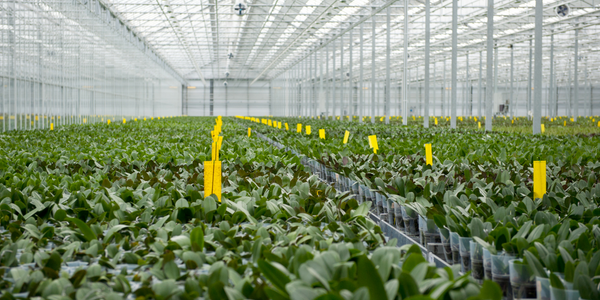Download PDF
Driving Operational Efficiency in Agriculture with IoT: A Case Study on Hitachi Process Intelligence and Google Cloud
Technology Category
- Analytics & Modeling - Big Data Analytics
- Analytics & Modeling - Machine Learning
Applicable Industries
- Agriculture
- Food & Beverage
Applicable Functions
- Product Research & Development
- Quality Assurance
Use Cases
- Agriculture Disease & Pest Management
- Livestock Monitoring
Services
- Cloud Planning, Design & Implementation Services
- Testing & Certification
The Challenge
Meat & Livestock Australia (MLA), a global leader in the production and export of livestock, was faced with the challenge of improving product quality, productivity, and global market share. They aimed to drive the adoption of best practices across the industry and improve data collection for enhanced decision making. The business challenge was integrating data across the value chain to drive decision making. This was necessary not only from a supply and demand perspective but also a quality perspective so that farmers could continuously improve and provide the right product at the right time to the right markets. Given that MLA supports 50,000 farms on over 5.2 million acres, they needed collaboration from solution and cloud partners with a deep understanding of the challenges within the meat and livestock industry and the expertise to develop a new internet of things (IoT) digital strategy for collecting data and making data-driven decisions across the value chain.
About The Customer
Meat & Livestock Australia (MLA) is among the world’s largest and most successful producers of livestock and a global leader in the export of beef, sheep, lamb, and goat meat. To support the industry’s profitability, sustainability, and global competitiveness, MLA delivers research, development, and marketing services to Australia’s cattle, sheep, and goat producers. MLA’s key stakeholders are their 50,000 livestock producer members. To drive leading-edge innovation, MLA engages in strategic partnerships aimed at increasing on-farm productivity and developing industry leadership skills through the use of digital technologies that will drive productivity, quality, and transparency.
The Solution
To enable its IoT journey, MLA turned to Hitachi and Google Cloud. Hitachi delivered Hitachi Process Intelligence (HPI) for Smart Agriculture, which allowed MLA’s stakeholders to visually represent individual farm operations and provide insight to decision-making and establish best practices across the supply chain. The solution combines advanced process and data analytics to support business decisions and accelerate business performance. HPI matches livestock operations against best practice frameworks, which combine industry-standard practices with farm-specific solutions to address unique needs. This provides decision support through projections and predictions that are developed using artificial intelligence and machine learning algorithms. The data collection plan included radio-frequency identification (RFID) tags in cattle across a broad range of locations. Hitachi also created a connected network providing linkage from sensors on the ground and unmanned aerial vehicles (UAVs) to the HPI platform. From field to sky, Hitachi and Google Cloud help Australia’s livestock industry to deploy sensors and capture advanced imaging to provide detailed biomass estimates, cattle head count and high-resolution surveys.
Operational Impact
Quantitative Benefit
Related Case Studies.

Case Study
Intelligent Farming with ThingWorx Analytics
Z Farms was facing three challenges: costly irrigation systems with water as a limited resource, narrow optimal ranges of soil moisture for growth with difficult maintenance and farm operators could not simply turn on irrigation systems like a faucet.

Case Study
The Kellogg Company
Kellogg keeps a close eye on its trade spend, analyzing large volumes of data and running complex simulations to predict which promotional activities will be the most effective. Kellogg needed to decrease the trade spend but its traditional relational database on premises could not keep up with the pace of demand.

Case Study
HEINEKEN Uses the Cloud to Reach 10.5 Million Consumers
For 2012 campaign, the Bond promotion, it planned to launch the campaign at the same time everywhere on the planet. That created unprecedented challenges for HEINEKEN—nowhere more so than in its technology operation. The primary digital content for the campaign was a 100-megabyte movie that had to play flawlessly for millions of viewers worldwide. After all, Bond never fails. No one was going to tolerate a technology failure that might bruise his brand.Previously, HEINEKEN had supported digital media at its outsourced datacenter. But that datacenter lacked the computing resources HEINEKEN needed, and building them—especially to support peak traffic that would total millions of simultaneous hits—would have been both time-consuming and expensive. Nor would it have provided the geographic reach that HEINEKEN needed to minimize latency worldwide.

Case Study
Greenhouse Intelligent Monitoring and Control Solution
Farming Orchids is the most successful form of precision farming in Taiwan, and also the most exported flower. Orchids need a specific temperature and humidity conditions to grow and bloom, and its flowering time may not be in line with market demands, so the price collapses when there is overproduction. Therefore, some farmers began to import automated greenhouse control systems for breeding and forcing, which not only improves quality, but also effectively controls the production period and yield to ensure revenue. In 2012, an orchid farmer built a Forcing Greenhouse of about 200 pings (approximately 661 Square Meters) in Tainan, Taiwan. The system integrator adopted Advantech’s APAX-5000 series programmable automation controllers to build the control platform, coupled with Advantech WebAccess HMI/SCADA software, to achieve cloud monitoring. The staff of the orchid field can monitor important data anytime via smart phone, iPad, and other handheld devices, and control the growth and flowering conditions. System requirements: In the past, most environmental control systems of orchid greenhouses in Taiwan used PLCs (Programmable Logic Controller) with poorscalability and control, and could not be connected to the Internet formonitoring from the cloud. For advanced database analysis and networking capability, the PC platform must be adopted. Therefore, PAC Systems (Programmable Automation Controller) with both PLC programming capabilities andPC functions is a better choice.The environmental control of the Orchid greenhouse switches on and off devices like fan, shade net, cooling/heat pump, liquid flow control, water-cooling wall etc. It is controlled by a control panel of electric controllers, and is driven by a motor, to adjust the greenhouse temperature, humidity, and other environmental conditions to the set parameters.







